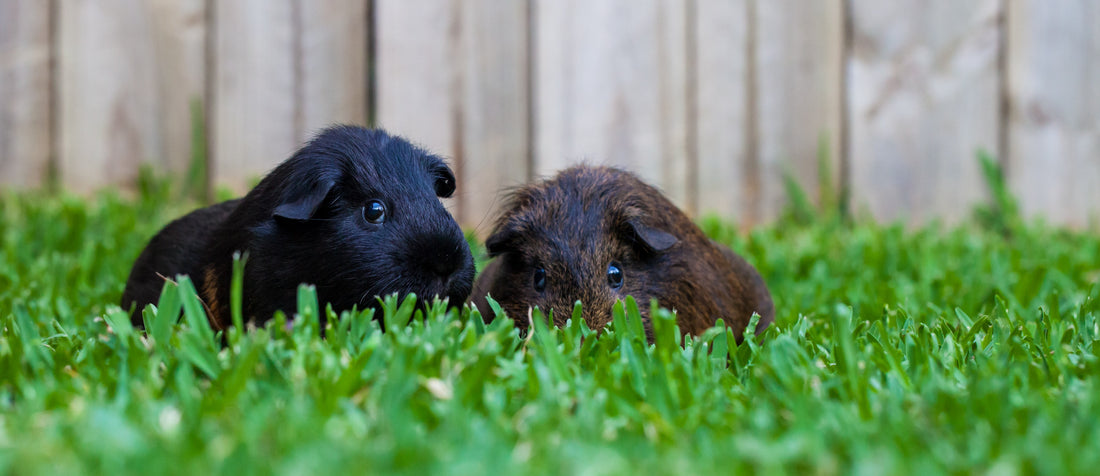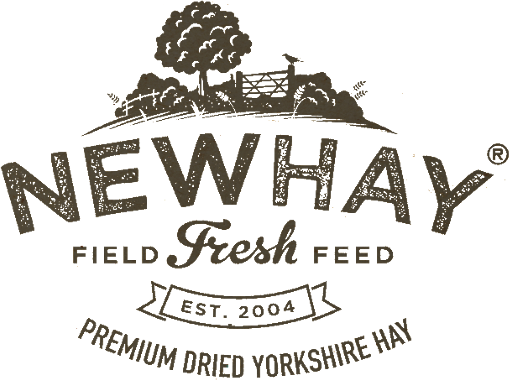
In the wild, foraging animals such as rabbits, guinea pigs and chinchillas, spend at least 70% of their day eating grass and other plants.
Foraging and chewing provide a range of benefits to these small herbivores. Not only does foraging keep your furry friends physically and emotionally stimulated, but it also allows them to carry out their natural behaviours that are essential for their dental and digestive health. Alongside feeding your small animals high-quality feeding hay like Timothy Hay, you can keep your pets entertained by hiding some tasty foods in their enclosure to encourage your pets natural foraging behaviour.
If you're a first-time pet owner or just curious about how to start foraging, read on to discover our ultimate guide with everything you need to know about foraging behaviour in animals. This will include what foods are safe to use when encouraging your pets to express their natural instincts, and what foods to avoid when foraging.
What is small animal foraging?
Foraging is the act of gathering food for free in the wild, but for our domestic animal friends, it is the time that they spend wandering around searching for food in their enclosures or wherever you would like to hide tasty bits of food. Natural foraging behaviours, such as hunting and chewing, will help keep your small furry friends physically and emotionally stimulated, with foraging playing an important role in keeping your pets happy and healthy through exploring for tasty treats.
You may notice your pet scurrying around their enclosure sniffing around dishes and toys, this behaviour shows your furry friends are foraging, looking for any food that’s hidden away that they can’t see. This could be purely through chance when they may have tipped over their bowl, but you can encourage this behaviour further by planning where you are going to hide treats, making the game as difficult or easy as you wish.

Why is foraging important for your pet’s mental and physical well-being?
Often our domestic animals live in environments with limited room to explore freely, whereas in the wild they can wander around as much as they would like. A lot of loving pet owners believe supplying their animals with food and water, toys and other games is all they need, but your pet needs more!
Foraging is a great way for your pet to stay fit and healthy, as it not only encourages them to exercise and increases their step count as they search for the tasty treats, but also stimulates them mentally by searching for food using their twitching noses which makes them tired from all the hard work sniffing around.
By replicating your pet’s natural habitat, you are turning mealtime into a game of problem-solving that is great for their mental and physical health when providing a place for your furry friends to forage, which is essential for fulfilling their natural foraging instinct.
How can you encourage your small animals to instinctively forage for food?
All pets will thrive when you build opportunities for them to carry out their natural instincts, and foraging is one of those. You can encourage your pet to forage by:
- Hiding treats in a toy.
- Weaving hay and twigs between cage bars.
- Making food harder to find - scatter food around your pet’s enclosure in their bedding or feeding hay to let them forage.
- Give your pets several feeding bowls with different foods at various locations in their enclosures.

The most simple way to encourage foraging is by placing your pet’s everyday food such as hay or grass in unexpected places where they don’t normally eat. This is the best way to allow your pets to use their natural tendency to forage for their food.
What foods are safe to pick for foraging?
It is important to know what foods are safe to pick if you’re interested in going out in the wild yourself to find your furry friends some foods to start foraging for, similar to the foods their wild relatives might find in their natural habitat. Here are a couple of plants that are the easiest to find across the UK.
Dandelions

These yellow blooms of the common dandelion are easy to spot and find all around the UK. Both plants and leaves are safe for your small pets to eat, so are a good go-to choice when thinking about what to include in your small pet’s forage.
Discover our very own tasty Timothy Hay with Dandelion and Nettle
Grass

There are many different types of grasses that your furry friends can have a nibble on, including timothy, cocksfoot, meadow foxtail and Yorkshire fog grass. Just never feed your pets grass cuttings, since this can make them very ill.
The Lesser-Water Parsnip

When out walking, look out for the white, umbrella-like flower heads of the lesser-water parsnip. These are most commonly found near water, including rivers, lakes and ponds. Just don’t get them mistaken for giant hogweed that is very dangerous (see below).
What foods are not safe to pick for foraging?
When on the hunt yourself for food’s to forage for your pet, make sure you avoid these two deadly species when picking wild plants:
Giant Hogweed

Giant hogweed is a common weed found in the UK, but did you know how dangerous it is not just for humans but also our furry friends? This tall plant with distinctive hollow stems with umbrella-like clusters of white flowers is extremely toxic. Although the entire plant is dangerous, the sap in the stems and foliage have a higher concentration of the toxin that is dangerous to almost anything that it comes into contact with.
Cutting the plant releases sap that contains toxins. This can cause serious health problems including recurring skin damage from the sap burning skin for both us and our animals, so stay away from this weed that can get mistaken for the lesser-water parsnip. If you are unsure whether the plant is safe or not, simply stay away and don’t take the risk because a lot of plants look very similar.
Hemlock

Extremely poisonous, hemlock is another tall plant that also has umbrella-like clusters of white flowers in Summer that have eye-catching purple-spotted stems making it distinctive from other plants. So beware of this deadly nasty when foraging, since only a small amount of hemlock can be fatal to us and our pets.
What can you pick from your garden for foraging?
If walking around searching for plants isn’t quite your style, you can’t get much easier than foraging in your own garden. Rose petals, wild geranium, nasturtium leaves and flowers are all good for foraging and perfectly safe for your pets to eat.
Do you have a herb garden or are you looking to plant one? This is a great idea for a starting point when wanting to pick the food for foraging, just don’t plan on growing chives since these are on the dangerous list. Pets that require a lot of fibre in their diets like rabbits and guinea pigs, will love a handful of fresh mint, basil, dill, parsley or rosemary as a special treat. Not only will they smell really good when foraging, but they will taste really good!
So if you want to know more about how everything we do at Newhay is designed to produce the best quality Timothy Hay for your small animals, that’s not only perfect to eat but also great for weaving between cage bars to encourage your furry friend to carry out their natural foraging behaviours.

